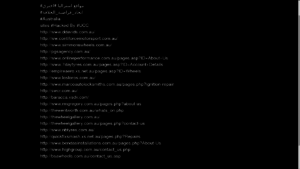Islamic State Hacking Division

Islamic State Hacking Division or United Cyber Caliphate refers to any number of group self-identifying as the digital army for Islamic State. The cyber security group had pledged allegiance to Islamic State and its objectives in late 2014. Their recent claims and hacks have led FBI director James Comey to state that his agency does not yet have the capabilities to limit ISIS attempts to recruit Americans through social media.[1][2]
In the recent attacks by ISHD they managed to deface websites and D-DOS many other.
A list of names and details said to be of American military personnel was released by unknown parties who said they were part of the ISHD, but doubts were raised on the source and nature of the data. [3]
Recently CCA (the group's new name) has attacked a number of NGO websites with the redirection to their own web pages as a method of defacement.
History
The hacktivist group emerged as Cyber Caliphate with allegedly four prominent hackers including Junaid Hussain (later killed in a US airstrike in Raqqa). By early 2016, the hacker group was decentralized and usually performed lone wolf attacks at multiple targets (websites of coalition countries). By March 2016, the group was still sub-divided into four divisions namely; 'Ghost Caliphate Section', 'Sons Caliphate Army', 'Cyber Caliphate Army' and 'Kalachnikv E-security team'. Cyber Caliphate Army being the prominent group among the four. In April 2016, all the four groups united as 'United Cyber Caliphate' and the news was broadcast through their Telegram channel and other social-media accounts.
In June 2016, the Middle East Media Research Institute located, and shared with media, an alleged list of approximately 8,300 people around the world as potential lone-wolf attack targets.[4][5] Nine other similar lists of targets have been discovered between February and June 2016.[6]
Successful Attacks (since mid-2014)

- Australian airport website defaced.[7]
- US Central Command's social media outlet (YouTube, Twitter and Facebook feed) taken out for nearly a day.[8]
- French TV5Monde live feed hacked, social media hacked and defaced with the message "Je Suis ISIS".[9] French investigators later discounted this, instead suspecting the involvement of a hacking group, APT28, allegedly linked to the Russian government.[10]
- United States' military database hacked in early August and data pertaining to approximately 1400 personnel posted online . [11]
- United States Air Force's pilots list with detailed personal information posted online.
- Top secret British government emails hacked. The emails pertained to top cabinet ministers. The intrusion was detected by GCHQ.[12]
- On April 15, 2016 (Friday), Islamic State hackers under the name UCC successfully hacked 20 Australian websites in a coordinated attack on Australian business. Some of the websites redirected to the website containing their content.
References
- ↑ Theodore Schleifer, CNN (18 June 2015). "FBI director: We can't yet limit ISIS on social media - CNNPolitics.com". CNN.
- ↑ Emma Graham-Harrison. "Could Isis's 'cyber caliphate' unleash a deadly attack on key targets?". the Guardian.
- ↑ "Doubts cast on Islamic State's so-called leak of US .mil, .gov passwords". theregister.co.uk.
- ↑ "Are you on the Islamic State's kill list? Check here". 10 June 2016. Retrieved 16 June 2016.
- ↑ Summers, Chris (9 June 2016). "ISIS orders American lone wolf jihadis to slaughter 8,000 citizens by releasing 'kill list' which includes the names of several Hollywood celebs". The Daily Mail (U.K.). Retrieved 16 June 2016.
- ↑ Arsenault, Adrienne (15 June 2016). "ISIS 'kill list' includes names of 151 Canadians". CBC.ca. Retrieved 16 June 2016.
- ↑ "Australian airport website hacked by Islamic State". Telegraph.co.uk. 13 April 2015.
- ↑ "Why the CentCom Hack Matters". The Daily Signal.
- ↑ "Europe - France's TV5Monde targeted in 'IS group cyberattack'". France 24.
- ↑ "France probes Russian lead in TV5Monde hacking: sources". Reuters. 10 June 2015. Retrieved 9 July 2015.
- ↑ Safi, Michael. "Isis 'hacking division' releases details of 1,400 Americans and urges attacks". the Guardian. Retrieved 2015-08-23.
- ↑ Perry, Keith. "ISIS hackers intercept top secret British Government emails". Retrieved 2015-09-21.